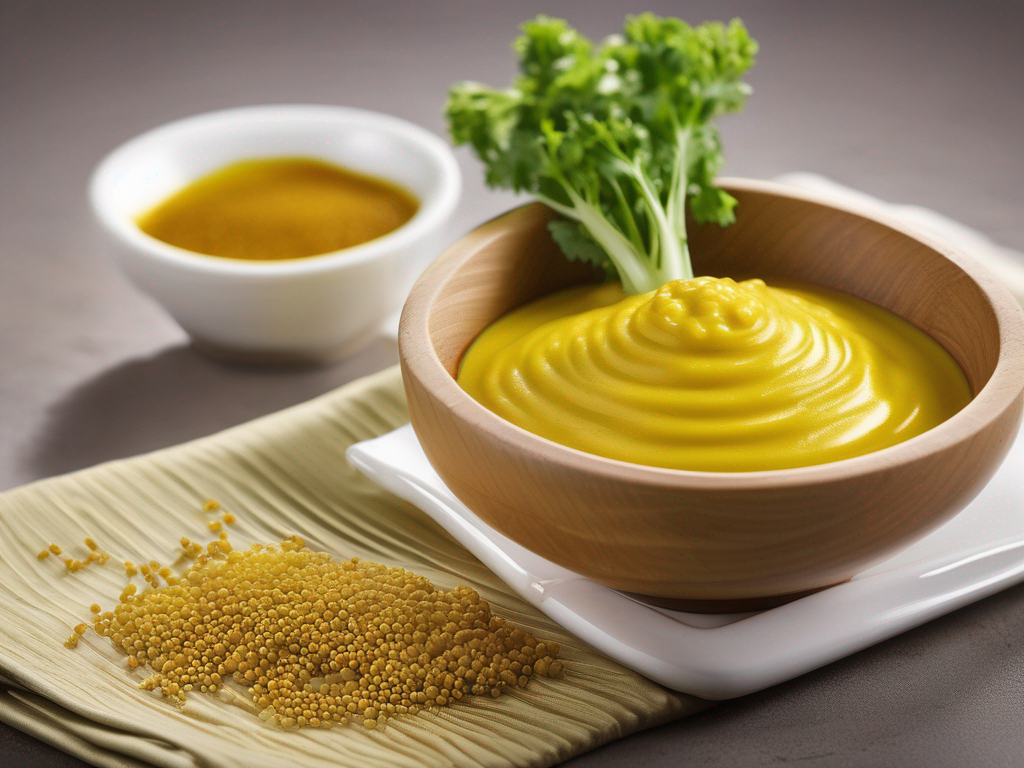
How to Store Chinese Mustard to Keep It Fresh for Longer
Get Your Free Food Safety Cheat Sheet
30 most common foods with instant answers. Print it and stick it on your fridge—completely free!
How to Store Chinese Mustard to Keep It Fresh for Longer
Chinese mustard, also known as gai choy, is a popular leafy green vegetable commonly used in Asian cuisine. It has a unique flavor profile that adds a delicious kick to stir-fries, soups, and salads. To fully enjoy the freshness and flavor of Chinese mustard, proper storage is key. In this blog post, we will explore the best practices for storing Chinese mustard to keep it fresh for longer. (Chinese mustard)
Understanding Chinese Mustard
Before diving into storage tips, let's take a closer look at Chinese mustard. This leafy green vegetable belongs to the Brassica family, which also includes kale, broccoli, and cabbage. Chinese mustard has a slightly spicy taste and a crunchy texture, making it a versatile ingredient in various dishes.
Health Benefits of Chinese Mustard
Chinese mustard is not only flavorful but also packed with nutrients. Some of the key health benefits of Chinese mustard include:
- Rich in vitamins A, C, and K
- High in fiber, promoting digestive health
- Contains antioxidants that may help reduce inflammation
Now that we understand the nutritional value of Chinese mustard, let's explore how to store it properly to maintain its freshness and quality.
Proper Storage Techniques
Proper storage is essential to extend the shelf life of Chinese mustard and prevent it from wilting or spoiling prematurely. Follow these tips to keep your Chinese mustard fresh for longer:
1. Refrigeration
- Place Chinese mustard in a perforated plastic bag or airtight container.
- Store in the vegetable crisper drawer of the refrigerator.
- Avoid washing the leaves before storing, as moisture can promote spoilage.
- Check the leaves regularly for any signs of wilting or decay.
2. Temperature and Humidity
- Chinese mustard prefers cool temperatures and high humidity.
- Maintain a refrigerator temperature of around 32-40°F (0-4°C) for optimal storage.
- Use a damp paper towel to lightly moisten the leaves if they appear dry.
3. Proper Air Circulation
- Ensure proper air circulation around the Chinese mustard to prevent moisture buildup.
- Avoid overcrowding the refrigerator drawer to allow for airflow.
4. Avoiding Ethylene Exposure
- Chinese mustard is sensitive to ethylene gas, which can accelerate spoilage.
- Store Chinese mustard away from ethylene-producing fruits like apples and bananas.
5. Freezing Chinese Mustard
- While fresh is best, you can freeze Chinese mustard for longer-term storage.
- Blanch the leaves in boiling water for a few seconds, then plunge them into ice water.
- Drain excess water, pat the leaves dry, and store them in a freezer-safe bag or container.
Safety Precautions
Ensuring food safety is paramount when storing Chinese mustard or any other perishable food item. Here are some safety precautions to keep in mind:
- Wash your hands thoroughly before handling Chinese mustard.
- Use clean utensils and cutting boards to prevent cross-contamination.
- Check for any signs of mold, discoloration, or off-odors before consuming Chinese mustard.
By following these storage tips and safety precautions, you can enjoy fresh and flavorful Chinese mustard in your culinary creations.
Conclusion
Proper storage is essential to preserve the freshness and quality of Chinese mustard. By refrigerating the leaves, maintaining the right temperature and humidity levels, ensuring proper air circulation, and avoiding ethylene exposure, you can prolong the shelf life of this nutritious vegetable. Remember to follow safety precautions and inspect the leaves regularly for any signs of spoilage. With these guidelines in mind, you can savor the vibrant flavors of Chinese mustard in your favorite dishes. [Learn more about Chinese mustard here](/food/chinese mustard). (Chinese mustard)
Authoritative Food Safety References
These agencies and university labs inform every tip and health precaution we publish.
USDA FoodKeeper – Cold Storage Guidelines
Official refrigerator, freezer, and pantry timelines maintained by the U.S. Department of Agriculture.
Visit USDA FoodKeeperFDA Produce Safety Rule & Grower Guidance
Field-to-fridge handling practices that prevent contamination of fruits, vegetables, and leafy greens.
Visit FDA Produce SafetyCDC Foodborne Illness Prevention Hub
Surveillance-backed guidance on pathogens, symptoms, and steps to reduce foodborne illness risk.
Visit CDC Food SafetyUC Davis Postharvest Technology Center
University research detailing optimal storage atmospheres for produce after harvest.
Visit UC Davis PostharvestPenn State Extension – Home Food Preservation & Safety
Peer-reviewed extension bulletins on safe canning, chilling, and reheating practices.
Visit Penn State ExtensionGet Your Free Food Safety Cheat Sheet
30 most common foods with instant answers. Print it and stick it on your fridge—completely free! Want more? Upgrade to the complete guide with 70+ foods.
Scan your food directly and get instant safety info using our AI-powered camera feature.